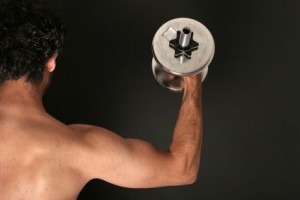 What is Creatine?
What is Creatine?
Aside from whey protein, creatine is one of the most popular and widely recommended supplements for beginners. The reasons are understandable, creatine is extremely effective, relatively inexpensive and safe. Creatine supplement has been used for decades in the health and fitness community for it’s ability to increase work capacity and improve body composition. More recently, creatine has been recommended to improve brain function. Unfortunately, there are a few drawbacks to using regular creatine such as water weight gain (which can cause loss of muscle tone and bloating) and upset stomach. Creatine ethyl ester HCL, also known as CEE Creatine, is a new form of creatine that is rising in popularity as a more effective alternative to creatine monohydrate powder.
Creatine Ethyl Ester Benefits
Before we look at the benefits of creatine ethyl ester over creatine monohydrate, let’s look at the benefits of increasing intramuscular creatine levels. First, creatine enables your body to perform more high intensity work. Supplmenting with creatine helps regenerate ATP, energy used by the body to fuel fast-twitch muscle fibers. Having plenty of creatine in the muscle provides energy quickly, so there’s less fatigue and longer duration of optimal performance [1]. If you’re lifting weights, that means you can lift more weight for a longer period of time – resulting in faster muscle and strength gains. Of course, sprinters or other athletes can also benefit greatly from improved fast-twitch muscle performance. For more cosmetic purposes, a benefit of creatine is increased muscle volume. With creatine supplementation, water moves to the muscle fibers and increases the size. However, since creatine monohydrate isn’t broken down by the body very efficiently, the water volumization isn’t always limited to the muscles. This is also where creatine ehtyl ester is superior to creatine monohydrate.
Creatine ethyl ester powder is a derivative of creatine[2]. It has been enhanced to improve absorption into the body, which is the main downfall of creatine monohydrate. Because of the poor absorption, users of creatine monohydrate powder often have to use large amounts to get maximum effects. This becomes an issue immediately by causing disturbed digestion and other gastrointestinal problems. As you could imagine, it’s not fun working out when your stomach is upset. Creatine ethyl ester may also have better skeletel muscle uptake than creatiine monhydrate, so less is required to improve muscle function and there is less creatine in other parts of the body to cause some of the other side effects of creatine such as dehydration and bloating. In essence, you may be able to use less creatine ethyl ester to achieve even better results than you do with creatine monohydrate[2].
CEE Creatine Dosage and Timing
Creatine ethyl ester is best used as a pre-workout supplement. You want the levels of creatine in your muscles to be highest. You can also use it first thing in the morning and before bed for 24-hour recovery benefits. The dosage of creatine ethyl ester is significantly less than regular creatine. First, there’s no loading period required, so you can begin with the standard dose. The recommended daily dosage is only 3-6g, much less than 5-25g recommended for creatine monohydrate.
